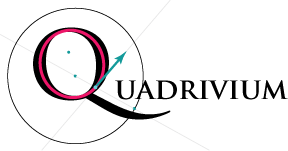
The area under the cycloid |
A cycloid is the curve traced by a point on a circle as the circle rolls along a line. (For technical reasons, this circle is rolling on a vertical line.)
Roberval (1634) found the area under the cycloid by the following reasoning:
The point Q (click both "Show" boxes) traces another curve, called the companion curve to the cycloid. It is now known as a sine curve.
The region between the companion (sine) curve and the cycloid has the same area as half the circle.
Half the cycloid is inscribed in a rectangle whose dimension are the diameter of the circle and half the circumference of the circle.
The sine curve cuts this rectangle in half.
Therefore the area under half of the cycloid is the same as one and one half the area of the circle, and the area under one arch of the cycloid is 3 times the area of the circle.
Susan Addington, Created with GeoGebra
| Mathematical Intentions |
Measuring the World |
Contact us |
Last updated November 29, 2010
Copyright 2009-10 David Dennis and Susan Addington. All rights reserved.
